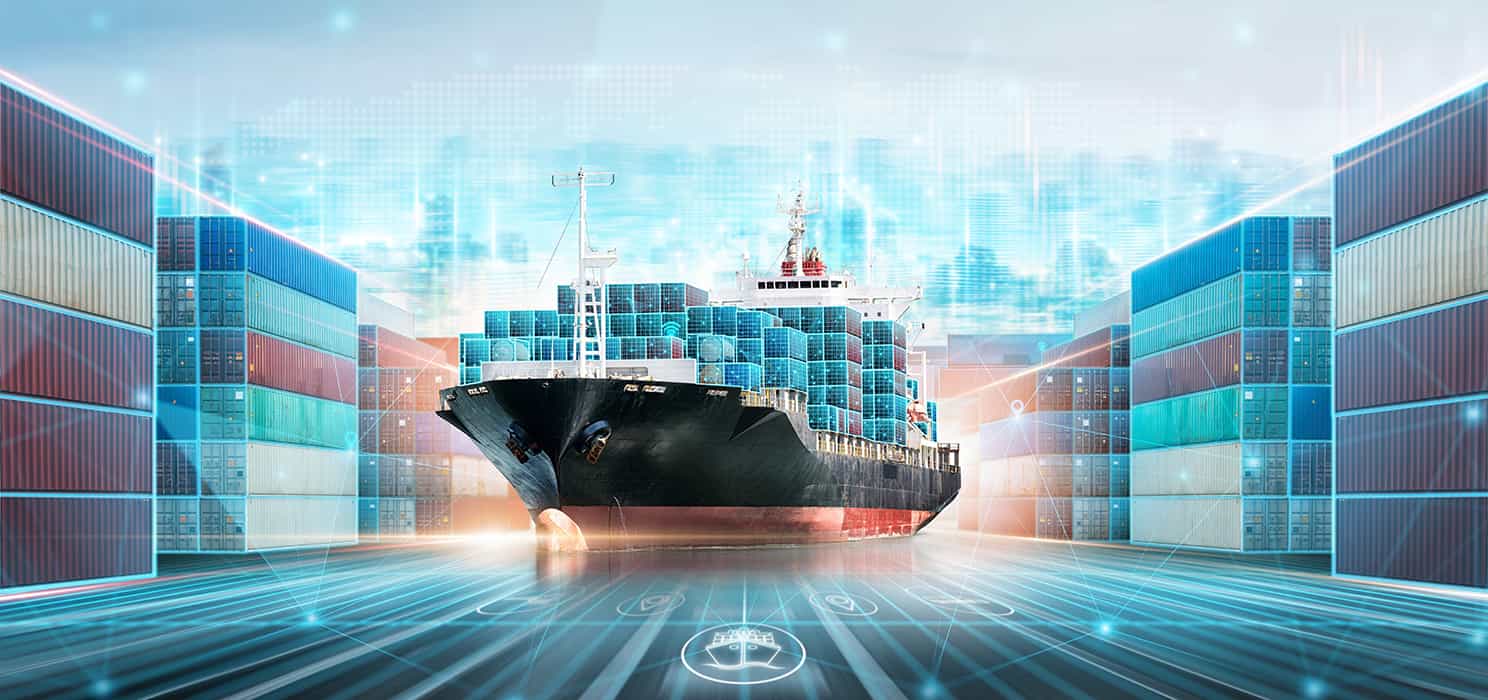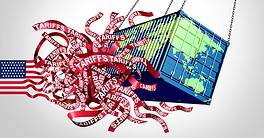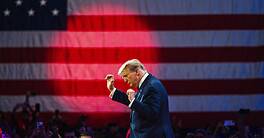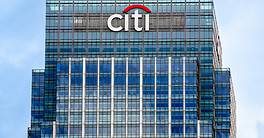New technologies are reshaping how goods and services are tracked around the world, and opening new options for financing global trade.
There’s a lot wrong with global trade these days: war, protectionism, supply chain bottlenecks, and terrorism—and that’s before even considering climate change and the possibility of future pandemics.
But there’s also much that’s right: Emerging technologies like artificial intelligence (AI), blockchain, and the internet of things (IoT) are helping to optimize shipping routes and track deliveries in real time; while regulatory developments like the UK’s 2023 Electronic Trade Documents Act (ETDA) presage a new era in which digital bills of lading and invoices replace age-old paper documents.
The New Era
Digitalization will be critical if international trade and trade finance are to move into the 21st century, most agree. Indeed, in the past half year some of the world’s largest financial institutions—Standard Chartered, JPMorgan, Citibank, and Bank of America, among others—have announced trade finance initiatives, often with fintech partners, aimed at accelerating this digitalizing process.
JPMorgan, for example, recently made a strategic investment in Cleareye.ai, developer of an AI tool that dramatically reduces the time it takes humans to review trade finance documents—slashing the time from three hours to about 10 minutes, according to the bank.
Elsewhere, Citibank and Maersk have partnered to develop the digital equivalent of bills of lading and bank guarantees. “Digital asset technologies have the potential to upgrade the regulated financial system by applying new technologies to existing legal instruments and well-established regulatory frameworks,” said Shahmir Khaliq, global head of services at Citi, in the September announcement.
Many believe that if these new initiatives and others like them come to fruition, trade finance could become democratized, bringing in many small and midsize enterprises (SMEs) that have historically struggled to secure the small, short-term loans required to engage in overseas commerce.
But challenges remain, including escalating trade tensions, an attachment to paper documents and processes harking back before the Clipper Ship era and even to medieval times, and the reluctance on the part of many players themselves—shippers, for example—to share trade data with competitors even if it translates to greater overall efficiency and profits.
“Highly Uncertain” in 2024
The interplay of trade finance, geopolitics, and technology is complex, even in the best of times; but in today’s unsettled global economy, the challenges are acute. Global trade may have shrunk by as much as 4.5% in 2023, from 2022’s record high, amid geopolitical strains and shifting trade patterns. Furthermore, the outlook for 2024 remains “highly uncertain and generally pessimistic,” says the United Nations Conference on Trade and Development (Unctad) in its December Global Trade Update, citing indicators like “persistent geopolitical tensions, high levels of debt, and widespread economic fragility.”
“So, yes, science and technology are the main hopes today” in overcoming geopolitical risks and conflicts, and AI and other technologies offer promise in building “a more efficient international trade finance,” Rouben Indjikian, lecturer in trade finance and commodities at Webster University Geneva, and former head of trade finance, e-commerce and commodities at Unctad, tells Global Finance.
Technology isn’t a silver bullet, of course; but optical character recognition technology can be used to read and digitize invoices and bills of lading; AI algorithms can help determine the creditworthiness of counterparties; and IoT devices—including sensors in ports, ships, and containers—can provide banks, insurers, and traders real-time information about the location of shipments, cutting down fraud and delays in the process.
Elsewhere, blockchain-enabled smart contracts can be used to automate payments so exporters don’t have to wait weeks or even months to get paid. And all that is even before talking about “tokenization” of real-world assets like exporters’ receivables, which in the not-too-distant future could become commonplace, in the view of some.
Change Is Sorely Overdue
“If ever there was a moment that trade finance is ripe for disruption or transformation, it is now,” Enno-Burghard Weitzel, SVP for strategy, digitalization, and business development at digital trade finance solutions provider Surecomp, tells Global Finance.
“Current trade finance systems are fragmented, siloed, and leave the tail end of the market chronically under-addressed,” adds Shayne Higdon, co-founder and CEO of the HBAR Foundation.
Indeed, an electronic bill of lading—the trade document that lists a shipment’s source, contents, and destination—“could save $6.5 billion in direct costs and enable $40 billion in global trade,” says McKinsey & Company. “While the banking and aviation industries have implemented digital standards enabling automated trade systems, shipping has not matured far beyond where it was in the 1400s,” McKinsey notes.
“It’s archaic,” comments Shawn Muma, director of supply chain innovation and emerging technologies at the Digital Supply Chain Institute (DSCI), part of the Center for Global Enterprise. “And it’s inefficient.”
Moreover, smaller firms face a nonlevel playing field when they seek to engage in cross-border trade. They have a difficult time getting paid by counterparties, for one thing, and often “wind up discounting or factoring receivables in order to get paid earlier,” Muma notes.
SMEs “are perceived [by banks and other lending institutions] as too small to deal with and too high as corporate risks.” When they do participate, they are “paying the highest financing prices these days,” adds Indjikian.
That said, “AI and machine learning hold immense potential to significantly enhance the accuracy of credit risk assessments in the trade finance sector,” potentially boosting SME participation, Ari Aaltonen, co-founder and CFO at LGR Global, tells Global Finance.
AI algorithms can evaluate a company’s historical trade performance, scrutinize market conditions, and incorporate macroeconomic indicators into credit evaluations. “Numerous financial institutions have [already] integrated AI algorithms, either directly into their credit-risk assessment processes or through strategic partnerships with fintech firms,” Aaltonen says.
Still, obtaining reliable customer financial information remains a challenge, “particularly when liquidity requests often originate from private organizations with nonpublic financial records,” he cautions.
Geopolitically Stressed
Global trade doesn’t happen in a vacuum, of course, and this past year has been fraught. Wars in Ukraine and the Middle East have taken a toll—for example, the Russian blockade on Ukraine’s grain exports—while US-China tensions are rising and having “a growing impact on global trade,” according to Unctad’s report.
One now hears more about “near-shoring” or “friend-shoring,” often seen as part of a growing deglobalization trend. With friend-shoring, a nation favors trade partners with similar political or economic values—e.g., free-market economies trade with other free-market nations—while near-shoring entails amplifying trade with neighbors.
When Mexico replaced China as the US’ top trading partner at the beginning of 2023, that could be seen as an example of both friend-shoring and near-shoring on the part of the US.
“The move to deglobalize the world’s economy definitely has an impact” on trade finance, says Dan Scanlan, an adviser to fintech companies and adjunct management professor at San Diego State University. “Whether it’s caused by US-China trade tensions or the reshoring of jobs to the US, it does impact the trade finance business; and it influences which banks continue in the business and which ones decide to exit.”
According to Scanlan, the trade finance pie is getting smaller, not larger. “Hence the amount of money available to invest and the amount of profit to be made are shrinking, not growing.”
Protecting One’s Intellectual Property
There are nonpolitical obstacles that could hinder trade finance transformation too. On the micro level, companies often want to safeguard their intellectual property, even if it’s no more than anonymous transactions recorded on a distributed digital ledger or private blockchain.
“Everybody wants to protect their information,” says the DSCI’s Muma. “I don’t want to disclose to you my manufacturing activities for today,” for instance, “because if you know that I’m running at 20% of capacity, you’re going to negotiate me down.”
Many companies still reckon that “whoever owns that hard copy of the bill of lading owns the asset associated with it, and they don’t necessarily want to share that data electronically,” Muma adds.
Along these lines, IBM and A.P. Moller-Maersk terminated their blockchain-based TradeLens project in late 2022. The project had been launched in 2018 with the aim of effecting a “leap in global supply chain digitization as an open and neutral industry platform,” Rotem Hershko, then head of business platforms at Maersk, said in a company statement. The project’s global container-shipping tracking platform would have been a “game changer” had it succeeded, many hold. But in the end, the project couldn’t get sufficient buy-in from shipping companies, though the complexity of its blockchain technology may also have been a factor.
Will Regulators Accept Digital Documents?
Regulators, too, will have to climb on board if trade finance is to be transformed. “Despite more than 15 years of effort, the digitization of bills of lading (BL) transactions remains limited,” notes fintech Trade Finance Global, adding that “the wide range of regulatory and local practices surrounding BLs on a global scale creates challenges.”
The UK’s recent adoption of the ETDA could make a difference, though. That legislation enables electronic trade documents such as digital bills of lading to be possessed or used in the same way as paper trade documents, provided security protocols are followed.
This change is important because an estimated “80% of all bills of lading, as well as a majority of trade documents generally, operate under English law,” according to law firm Reed Smith.
Not only the UK, but also Singapore and those parts of the US governed by Delaware law, are now willing to accept digital records as equivalent to paper, thus creating a “critical mass” of sorts, Surecomp’s Weitzel tells Global Finance.
The Promise of Tokenization
Looking ahead, some banks and fintechs are experimenting with tokenization, which would take trade finance into still more uncharted waters.
Tokenization is the process of converting ownership of or rights to real-world assets into digital tokens that can then be recorded; tracked; and even traded on a distributed digital ledger (often a blockchain, which is a form of distributed ledger technology). Most anything can be tokenized, including real estate, physical art, carbon credits—and even SMEs’ receivables.
“Tokenization, combined with the programmability of smart contracts [that run on blockchains], simplifies trade finance,” says HBAR’s Higdon. In time, it might allow “farmers and SMEs to focus more time on their core business rather than how to fund themselves appropriately.”
Fresh Supply Co, for instance, one of HBAR’s grantees, has created such a network in the agrifood area. “Their platform gathers data points from production to delivery to manage credit risk and tokenizes the assets produced—salmon or avocados, for example—to be used as collateral for lending,” Higdon explains. Not only do farmers get much needed credit, but they also receive timely payments when their goods are received.
Tokenized trade finance has caught the eye of some of the world’s largest financial institutions. Standard Chartered confirmed in July that investors had purchased some $500 million of tokenized trade finance assets—in this case trade receivables—that the UK bank had posted for sale on an Ethereum-based blockchain, a test program that Standard Chartered had developed as part of the Project Guardian pilot program of the Monetary Authority of Singapore and the Bank for International Settlements.
It’s not clear whether tokenized projects can be easily scaled, however. “One of the main problems with tokenization is that when a tokenized asset is created, it automatically transitions into the blockchain space,” where the dominance of “assertive crypto investors” can create problems—like price volatility, says Alex Axelrod, CEO and founder of the international payment platform Uluky.
Then, too, tokenization may simply be too complex for some SMEs, Axelrod adds; though on balance he agrees that tokenization could enable smaller enterprises “to participate more actively in global trade activities.”
An Industry “On the Cusp”
Much work lies ahead, however. “Enhancing interoperability among diverse organizational systems, such as banks, shipping companies, and insurance firms—achievable through blockchain technology,” will be a “crucial aspect” in the transformation process, says LGR Global’s Aaltonen.
Others suggest a metamorphosis is underway and probably can’t be stopped. “We will see major changes in platforms and adoption of platforms soon—it could be as early as three years,” predicts Muma.
It could have all sorts of interesting consequences. For instance, online trade finance platforms accessible to new players could eventually help to “diminish the famous trade finance gap,” (the deficit in financing between emerging and developed markets), says Indjikian.
“We are on the cusp of seeing a digitalization of the entire supply chain, including logistics, customs, bills of lading—and, yes, trade financing,” concludes Muma. A fintech called Azarc, for example, has already reduced some customs clearances from two or three days down to a few minutes. Overall, he adds, “it’s going to be profound.”




